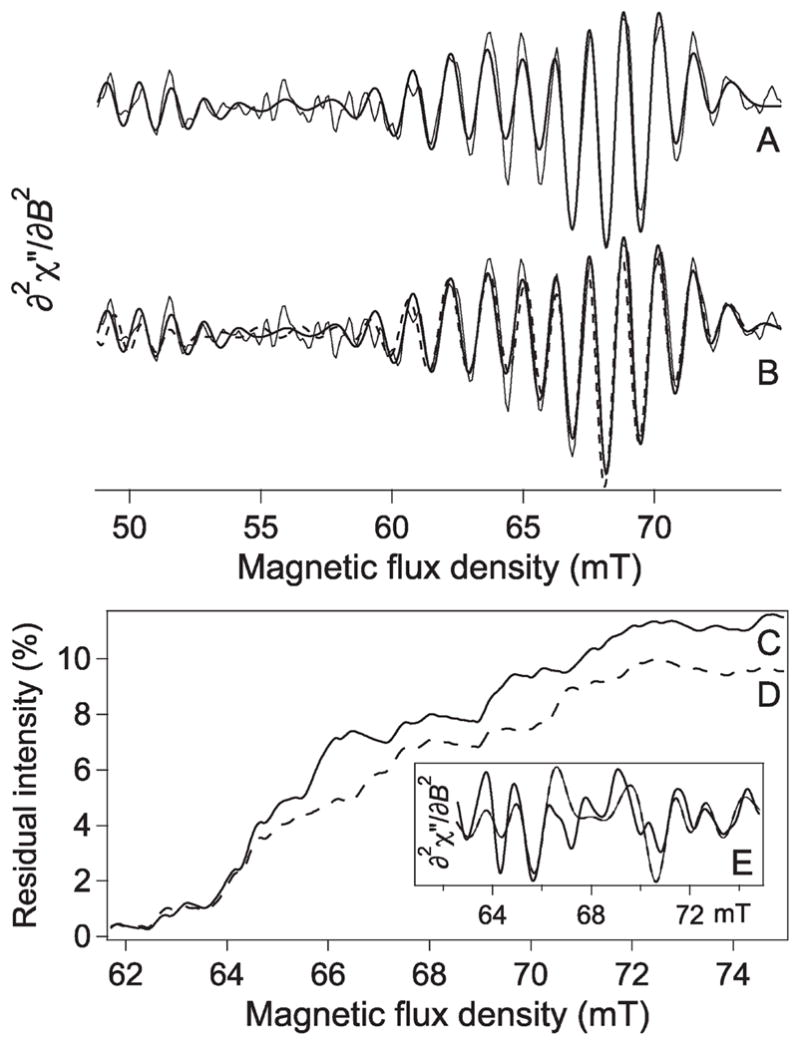Figure 5.

Analysis of the L-band EPR spectrum of 63Cu(II)–PrPf2 component 3. (A) Pseudomodulated derivative of the experimental L-band spectrum (i.e., the ∂2χ″/∂B2 spectrum) of component 3 (faint line) and a simulation assuming three coordinated nitrogen atoms (thick line) are shown overlaid. (B) Pseudomodulated derivative of the experimental L-band spectrum (i.e., the ∂2χ″/∂B2 spectrum) of component 3 (faint line) and simulations assuming four coordinated nitrogen atoms (thick and dashed lines) are shown overlaid. The simulations assumed either coincident g and A (thick line) or noncoincident g and A with g|| determined from X-band EPR (dashed line). Trace C is the first integral of the modulus of the residual, ∫ |[(∂2χ″/∂B2)exp − (∂2χ″/∂B2)sim]| dB, where the residual (∂2χ″/∂B2)exp − (∂2χ″/∂B2)sim was obtained by subtraction of the ∂2χ″/∂B2 three-nitrogen simulation from the ∂2χ″/∂B2 experimental spectrum. Trace D is the corresponding ∫ |[(∂2χ″/∂B2)exp − (∂2χ″/∂B2)sim]| dB for the four-nitrogen simulation. The intensities are expressed as a fraction of the integrated modulus ∫ |[(∂2χ″/∂B2)| dB of the four-nitrogen computed spectrum. Inset E shows the residual generated by subtraction of the three-nitrogen computed ∂2χ″/∂B2 spectrum from the experimental ∂2χ″/∂B2 spectrum (thick line), overlaid on the residual generated by subtraction of the three-nitrogen computed ∂2χ″/∂B2 spectrum from the four-nitrogen computed ∂2χ″/∂B2 spectrum (thin line with thick dashes).
